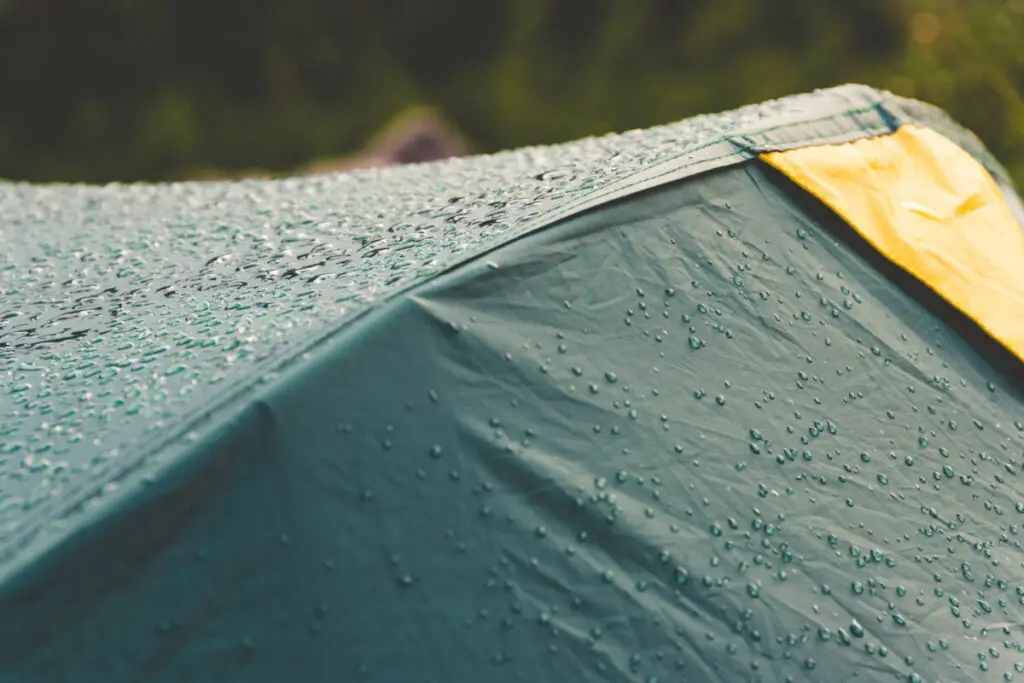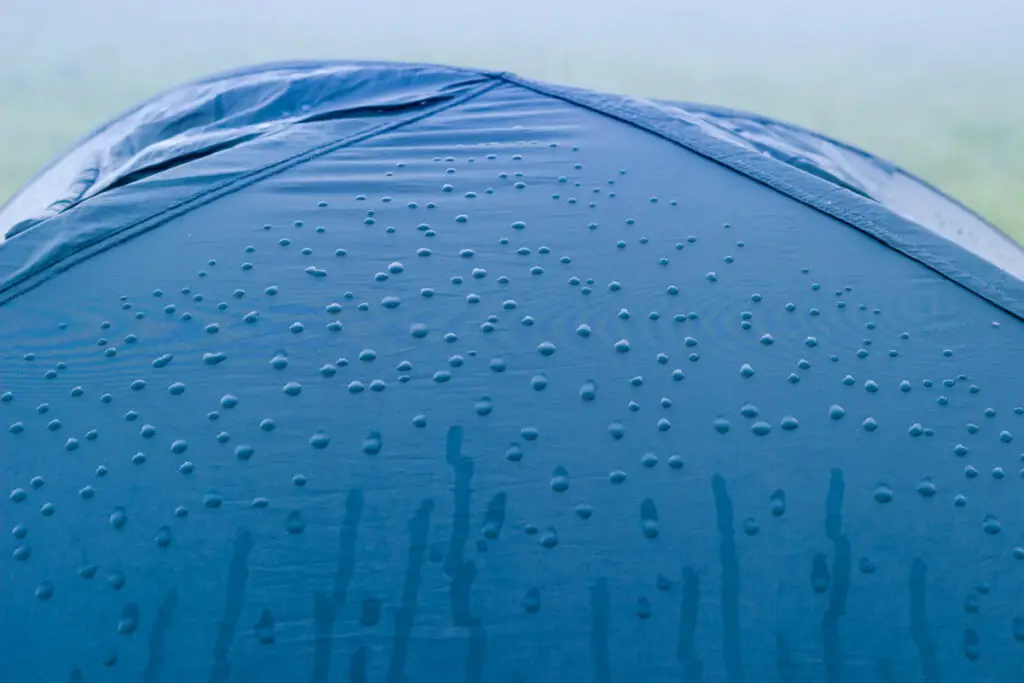
A new tent is an exciting purchase, but certain measures need to be taken to ensure that it has the longest life possible with the least amount of problems.
It is not necessary to waterproof a new tent unless it is leaking water. However, it won’t harm the tent if materials are added to make it more waterproof to ensure those in the tent do not get wet while it rains or because of morning dew. There are many things that can be used to waterproof a tent.
There are many aspects of owning a tent that determine the need and frequency of waterproofing.
What is Waterproofing?
Waterproofing is a series of steps that can be taken to prevent water from entering your tent. This act includes several processes that can be implemented based on the circumstances of your tent.
The parts of the process include seam sealing, renewing the urethane coating, and reapplying the durable water repellent. Any one of these can be done to your tent, all the steps are not necessarily required but can be used together, it just depends on what exactly is wrong with your tent.
When it’s Needed
Waterproofing doesn’t have to be just a solution to a problem, it can also be a preventative measure, but it is not necessary to waterproof a new tent unless there are issues with it. If there are issues with a tent this new, you should contact the company, as it is not normal.
There are several unpleasant situations that would demand you to do some type of handiwork for your tent. These include, but are not limited to, water soaking through the seams, rainfly, soaking through the floor, or condensation building up on the interior of the tent. If there is water coming through the seams, it is likely that at least one of them is ripped. Water consistently soaking through any part of your tent is not a normal or positive occurrence. (Source)
Frequency
A tent can be waterproofed as often as it needs but typically, you won’t have to redo the process again. However, if you put a lot of wear and tear on the tent, use it for long periods at a time, or notice that it’s leaking again, that is a strong indicator that you will need to repeat the process of waterproofing now and probably again in the future.
Seam sealing is supposed to be a one-time thing unless you are camping in harsh conditions for long periods at a time. If worst comes to worst, it is not uncommon to have to reseal your tent’s seams once every 8-10 years. However, a good tent should last a minimum of 4-7 years before it starts to wear down enough to need waterproofing or the seams sealed. While it’s not necessary, if you are a cautious person it’s okay to waterproof your tent once a year if you feel it is necessary.
How To Waterproof a Tent

Waterproofing can be as simple as a spray you apply to your tent walls and floors or as complicated as sealing the seams, repairing the coating, and applying durable water repellent. Each of these processes has an individual purpose, but they can also be done together. It just depends on what your tent needs.
When sealing the seams of your tent, it must be completely dry. It is helpful to be in a bright room to be able to see the quality of all of the seams when sealing them. Flip the tent inside out and remove any pieces of seam tape that are peeling and then clean all the intact seams with rubbing alcohol. Apply the product and allow it to dry. It is recommended to apply the sealer to all of the seams, not just the broken ones. (Source)
Repairing the coating of your tent requires you to apply tent sealant to the problem walls or doors of the tent. The first step is to use rubbing alcohol and the scrubber part of a sponge to remove the damaged coating of the rainfly and/or floor. Now you can apply the sealant to the affected area, be sure to follow the sealant’s instructions, then let it dry for at least 24 hours.
The last step of the process is to waterproof the exterior with a waterproofing spray. First, set up the tent and clean off the rainfly and exterior that you are wanting to waterproof. The easiest way to do this is by spraying it down with a hose. Then, apply the waterproofing spray evenly across the material (the tent doesn’t have to be dry to do this). Wait a few minutes and then use a damp cloth to wipe off any extra coating. Let it dry completely before putting it away.
If you would like further instructions, watch the video below.
What to Use
On an online forum, many different waterproofing products were discussed and suggested. One of them was the Kiwi Camp Dry Heavy Duty Water Repellent. It was suggested to someone whose tent was experiencing water leaking problems. This spray was also recommended in a few online articles and has received a lot of positive reviews.
It can be found at Walmart or purchased online. It costs $6.94 and comes in a 10.5-ounce bottle. It is rated 4.6 stars and reviewed by over 100 people. The only downside of this product that was reported was that it takes about 24-48 hours to dry.
For seam sealers, Gear Aid Seam Grip Seam Sealer is reviewed by many to be a solid, long lasting product. It is rated 4.4 stars, reviewed by over 500 customers, and costs $8.95. There is 1 ounce of product in the container and it has won an award from the Backpacker Magazine’s Editors for its’ stability and effectiveness.
It is important to do research on what products to use because different tent fabrics require different sealants. If you don’t know what material your tent is made out of, you can look up the tent that you have, and it should come up. Most tents are made of polyurethane-coated fabric, but some are made of silicone-treated fabric.

